Does plastic waste kill mangroves? A field experiment to assess the impact of macro plastics on mangrove growth, stress response and survival
Celine E.J.van, Bijsterveldt Bregje K.van Wesenbeeck, SriRamadhani, Olivier V.Raven, Fleur E.van Gool, RudhiPribadifTjeerd J.Bouma
The value of mangroves has been widely acknowledged, but mangrove forests continue to decline due to numerous anthropogenic stressors. The impact of plastic waste is however poorly known, even though the amount of plastic litter is the largest in the region where mangroves are declining the fastest: South East Asia. In this study, we examine the extent of the plastic waste problem in mangroves along the north coast of Java, Indonesia. First, we investigate how much of the forest floor is covered by plastic in the field (in number of items per m2 and in percentage of the forest floor covered by plastic), and if plastic is also buried in the upper layers of the sediment. We then experimentally investigate the effects of a range of plastic cover percentages (0%, 50% and 100%) on root growth, stress response of the tree and tree survival over a period of six weeks. Field monitoring showed that plastic was abundant, with 27 plastic items per m2 on average, covering up to 50% of the forest floor at multiple locations. Moreover, core data revealed that plastic was frequently buried in the upper layers of the sediment where it becomes immobile and can create prolonged anoxic conditions. Our experiment subsequently revealed that prolonged suffocation by plastic caused immediate pneumatophore growth and potential leaf loss. However, trees in the 50%-plastic cover treatment proved surprisingly resilient and were able to maintain their canopy over the course of the experiment, whereas trees in the 100%-plastic cover treatment had a significantly decreased leaf area index and survival by the end of the experiment. Our findings demonstrate that mangrove trees are relatively resilient to partial burial by plastic waste. However, mangrove stands are likely to deteriorate eventually if plastic continues to accumulate.
Microplastics in mangroves and coral reef ecosystems: a review
Juliana John, A R Nandhini, Padmanaban Velayudhaperumal Chellam, Mika Sillanpää
Department of Civil Engineering, National Institute of Techno
Microplastic pollution has recently been identifed as a major issue for the health of ecosystems. Microplastics have typically sizes of less than 5 mm and occur in various forms, such as pellets, fbres, fragments, flms, and granules. Mangroves and coral reefs are sensitive and restricted ecosystems that provide free ecological services such as coastal protection, maintaining natural cycles, hotspots of biodiversity and economically valuable goods. However, urbanization and industrial activities have started contaminating even these preserved ecosystems. Here we review sources, occurrence, and toxicity of microplastics in the trophic levels of mangrove and coral reef ecosystems. We present detection methods, such as microscopic identifcation and spectroscopy. We discuss mitigating measures that prevent the entry of microplastics into the marine environment.
Distribution and current status of mangrove forests in Indonesia
Cecep Kusmana
Department of Silviculture, Faculty of Forestry, Bogor Agricu
Indonesia is an archipelagic country of more than 17,504 islands with the length of coastline estimated at 95,181 km, which bears mangroves from several meters to several kilometers. They grow extensively along the inner facing coastlines of most of the large islands and estuarine. They consist of various community types, either mixed or pure stands, mainly distributed in the five big islands (Jawa, Sumatra, Kalimantan, Sulawesi, Papua). In 2009, the Agency of Survey Coordination and National Mapping (Republic of Indonesia) of Indonesia reported the existing mangrove forest area in Indonesia of about 3,244,018 ha; however, at 2007 the Directorate General of Land Rehabilitation and Social Forestry, Ministry of Forestry (Ditjen RLPS MoF) of Indonesia reported about 7,758,411 ha of mangrove area (including an existing vegetated mangrove area). It was further reported that of those mangroves 30.7 % were in good condition, 27.4 % moderately destroyed and 41.9 % heavily destroyed. There are at least five ministries responsible for mangrove resource allocation and management in Indonesia, in which the Ministry of Forestry has the major authority. Nowadays, two Bureaus of Mangrove Forest Management, the National Mangrove Working Group and the Local (Provincial and Regency/City) Mangrove Working Group, as well as the Presidential Decree (PerPres) No. 73/2012 regarding National Strategy of Mangrove Management have been setup to strengthen the sustainable mangrove forest management. Currently the Indonesian Government leases a 85,000-ha mangrove forest in Bintuni, Papua and 28,280 ha in Batu Ampar, West Kalimantan to three forest concessioner companies to be harvested using seed tree method silvicultural systems. To enhance the conservation focus as stated on the Presidential Decree (Kepres) No. 32/1990, the width of the mangrove green belt in any coastal area should be set up about 130 × annual average of the difference between the highest and lowest tides. In Indonesia some mangrove forests have been destroyed by various causes, mainly conversion to other uses. In order to recover the destroyed mangroves, the Indonesian Government (c.q. Ministry of Forestry and Ministry of Marine and Fishery) collaborated with stakeholders (domestic and international) and executed rehabilitation as well as restoration of those destroyed mangroves, either in or outside state forest area.
Microplastics pollution in mangrove ecosystems: A critical review of current knowledge and future directions
Hui Deng, Jianxiong He, Dan Feng, Yuanyuan Zhao, Wei Sun, Huamei Yu, Chengjun Ge
Key Laboratory of Agro-Forestry Environmental Processes and E
Over the last decade, microplastics (MPs, plastic particles <5 mm) as emerging contaminants have received a great deal of international attention, not only because of their continuous accumulation in both marine and ter- restrial environment, but also due to their serious threats posed to the environment. Voluminous studies regard- ing sources, distribution characterization, and fate of MPs in the different environmental compartments (e.g., marine, freshwater, wastewater, and soil) have been reported since 2004, whereas MPs pollution in unique marine ecosystems (e.g., coastal mangrove habitat) receives little scientific attention. Mangrove ecosystem, an important buffer between the land and the sea, has been identified as a potential sink of MPs caused by both ma- rine and land-based activities. Moreover, the source and distribution characteristics of MPs in this ecosystem are significantly different from other coastal habitats, mainly owing to its unique features of high productivity and biomass. With the impetus to provide a more integrated view of MPs pollution in mangrove habitats, a literature review was conducted based on the existing studies related to this topic. This is the first review to present the current state of MPs pollution in mangrove ecosystems, specially including (i) the possible sources of MPs in mangrove areas and their pathways entering into this habitat; (ii) MPs pollution in the different mangrove com- partments (including surface seawater, sediments, and biotas); and (iii) factors influencing MPs distribution in mangrove areas. Toward that end, the research gaps are proposed to guide for future research priorities.
Spatial and temporal distribution of microplastic in surface water of tropical estuary: Case study in Benoa Bay, Bali, Indonesia
Yulianto Suteja, Agus Saleh Atmadipoera, Etty Riani, Wayan Nurjaya, Dwiyoga Nugroho, Muhammad Reza Cordova
In 2010, Indonesia estimated as the second-largest country in the world that donates plastic to the sea. This study aims to investigate the spatial and temporal distribution of microplastics in tropical estuaries. The sampling was carried out in Benoa Bay with four repetitions representing the wet and dry seasons. Spatially it was found that the highest microplastic abundance around the Suwung landfill, while the lowest at Badung River Estuary, middle, and an inlet of the Benoa Bay. The highest percentage to the lowest microplastic based on the size was 500–1000 ?m (37.9%), >1000 ?m (35.7%), 300–500 ?m (22.1%), and <300 ?m (4.3%), while based on the shape were fragments (73.19%), foam (17.02%), fiber (6.38%), and granule (3.40%). No significant differences were found between the wet and dry seasons based on the abundance, but significantly varied based on size and shape. Polymers of microplastics were dominated by polystyrene, polypropylene, and polyethylene.
Safeguarding the Plastic Recycling Value Chain: Insights from COVID-19 impact in South and Southeast Asia
GA Capital, commisioned by Circuate Capital
The COVID-19 pandemic has caused severe setbacks to the ongoing global movement to tackle plastic waste and to move towards a circular economy. Circular economy initiatives and commitments by the plastics industry and national-level marine plastic prevention programs, especially those in South and Southeast Asia, rely on recycling value chains to collect, clean and process the plastics for recycling. The abrupt stoppage of the value chain has led to more plastics entering landfills and likely more plastics entering the open environment and waterways, as there have been less formal and informal collectors engaged in waste management and plastic collection.
Model-based estimation of plastic debris accumulation in Banten Bay, Indonesia, using particle tracking - Flow model hydrodynamics approach
Ulung J. Wisha, Wisnu A. Gemilang , Yusuf J. Wijaya, Anang D. Purwanto
Research Institute for Coastal Resources and Vulnerability, M
Coastal pollution caused by marine debris in Banten Bay is increasing and threatening the environmental and ecological sustainability of the bay’s coastal area. This study aims to simulate the particle tracking of floating plastic debris within Banten Bay and to estimate the coastal debris accumulation for the period 2018 to 2028 based on numerical spatial modeling. To determine the dominant direction of plastic debris flow, we recorded floating plastic waste at four locations (Bojonegara port, Karangantu Estuary, Cibanten Estuary, and the Sunda Straits) by releasing wooden drifters. The numerical model was developed using a Particle Tracking module based on the Langevin equation. In comparison to data provided by the drifter survey, the particle tracking showed a similar distribution trace that tended to move westward during the northeast monsoon and eastward during the southwest monsoon. During the northeast monsoon, marine debris intake peaked, ranging from 2.25 kg to 5.75 kg. We estimated that over the ten years modeled plastic debris accumulation would increase by approximately 11%, to a maximum rate of 9.42 kg/day. Of particular concern, it is modeled that 41% of Banten Bay will be covered by plastic debris in 2028 if effective mitigations are not immediately applied. We recommend conducting a coastal cleanup operation every ten days so that coastal debris deposits can be well-controlled.
Multi-Scenario Model of Plastic Waste Accumulation Potential in Indonesia Using Integrated Remote Sensing, Statistic and Socio-Demographic Data
Anjar Dimara Sakti, Aprilia Nidia Rinasti, Elprida Agustina, Hanif Diastomo, Fickrie Muhammad Zuzy Anna, and Ketut Wikantika
Center for Remote Sensing, Institut Teknologi Bandung, Bandun
As a significant contributor of plastic waste to the marine environment, Indonesia is striving to construct a national strategy for reducing plastic debris. Hence, the primary aim of this study is to create a model for plastic waste quantity originating from the mainland, accumulated in estuaries. This was achieved by compiling baseline data of marine plastic disposal from the mainland via comprehensive contextualisation of data generated by remote sensing technology and spatial analysis. The parameters used in this study cover plastic waste generation, land cover, population distribution, and human activity identification. These parameters were then used to generate the plastic waste disposal index; that is, the distribution of waste from the mainland, flowing through the river, and ultimately accumulating in the estuary. The plastic waste distribution is calculated based on the weighting method and overlap analysis between land and coastal areas. The results indicate that 0.6% of Indonesia, including metropolitan cities, account for the highest generation of plastic waste. Indicating of plastic releases to the ocean applied by of developing three different scenarios with the highest estimation 11.94 tonnes on a daily basis in an urban area, intended as the baseline study for setting priority zone for plastic waste management.
Marine debris in Indonesia: A review of research and status
Noir P. Purbaa, Dannisa I.W. Handymanari, D. Pribadib, Agung D. Syaktic, Widodo S. Pranowod, Andrew Harveye, Yudi N. Ihsana
Marine Research Laboratory (MEAL), University of Padjadjaran,
With the status as the world's top contributor of marine plastic debris, Indonesia has committed to reduce marine plastic debris up to 70% in 2025 by establishing the National Action Plan (NAP) on Marine Debris. The high amount of marine plastic debris as a result of transport and accumulation become a complex issue in Indonesia due to its ocean-atmospheric circulation, high population of coastal communities, and marine activities. Based on our findings, there are gap of publications related to marine debris in Indonesia that had been already published. Marine debris is ubiquitous and transboundary, as they were found in marine environment and transported by currents to various direction including uninhabited islands, thus, we propose more comprehensive future research about the impact of marine debris on ecosystem (e.g. biological impact of organisms in the water column, ecological alteration in distribution pattern, and invasive species), human health, and economic loss.
Citarum Harum Project: A Restoration Model of Citarum River Basin
Abdul Malik Sadat Idris
The Indonesian Journal of Development Planning
Volume III No. 3 – December 2019
The problem of waste and sewage and the existence of the strategic Citarum River by splitting West Java Province are very supportive of economic growth, especially labor-intensive industries. Citarum, which is known as one of the dirtiest rivers in the world, urges the government to immediately issue regulations to start the restoration of the Citarum River Basin (DAS Citarum), that is Presidential Regulation No. 15 of 2018 concerning Acceleration of Pollution and Damage Control in the Citarum River Basin. Various steps and methods were taken to restore the Citarum watershed, as well as communication and coordination of the central government with various related parties such as the Environmental Service Office (DLH) of the West Java Provincial Government and Kodam III Siliwangi to be enhanced to immediately realize Harum Citarum program.
Microplastics in corals: An emergent threat
Soares, Matos, E., Lucas, C., Rizzo, L., Allcock, L., & Rossi, S.
Instituto de Ciências do Mar-LABOMAR, Universidade Federal do
This article seeks to present a summary of knowledge and thus improve awareness of microplastic impacts on corals. Recent research suggests that microplastics have a variety of species-specific impacts. Among them, a reduced growth, a substantial decrease of detoxifying and immunity enzymes, an increase in antioxidant enzyme activity, high production of mucus, reduction of fitness, and negative effects on coral-Symbiodiniaceae relationships have been highlighted in recent papers. In addition to this, tissue necrosis, lower fertilization success, alteration of metabolite profiles, energetic costs, decreased skeletal growth and calcification, and coral bleaching have been observed under significant concentrations of microplastics. Furthermore, impairment of feeding performance and food intake, changes in photosynthetic performance and increased exposure to contaminants, pathogens and other harmful compounds have also been found. In conclusion, microplastics may cause a plethora of impacts on corals in shallow, mesophotic, and deep-sea zones at different latitudes; underlining an emerging threat globally. [Display omitted] •The effects of microplastics on corals have been reviewed.•Microplastics have become the most recent and understudied threat to coral reefs.•The species-specific impacts of microplastics on corals•Investigations are needed into the impact of microplastics in corals at all depths.
Plastic waste associated with disease on coral reefs
Lamb, Joleah B ; Willis, Bette L ; Fiorenza, Evan A ; Couch, Courtney S ; Howard, Robert ; Rader, Douglas N ; True, James D ; Kelly, Lisa A ; Ahmad, Awaludinnoer ; Jompa, Jamaluddin ; Harvell, C. Drew
WASHINGTON: AMER ASSOC ADVANCEMENT SCIENCE
Plastic waste can promote microbial colonization by pathogens implicated in outbreaks of disease in the ocean. We assessed the influence of plastic waste on disease risk in 124,000 reef-building corals from 159 reefs in the Asia-Pacific region. The likelihood of disease increases from 4% to 89% when corals are in contact with plastic. Structurally complex corals are eight times more likely to be affected by plastic, suggesting that microhabitats for reef-associated organisms and valuable fisheries will be disproportionately affected. Plastic levels on coral reefs correspond to estimates of terrestrial mismanaged plastic waste entering the ocean. We estimate that 11.1 billion plastic items are entangled on coral reefsacross the Asia-Pacific and project this number to increase 40% by 2025. Plastic waste management is critical for reducing diseases that threaten ecosystem health and human livelihoods.
Microplastics as a sedimentary component in reef systems: A case study from the Java Sea
Dwi Amanda Utami, Lars Reuning, Olga Konechnaya
Geotechnology Research Centre, Indonesian Institute of Scienc
Microplastic pollution has been reported from coral reef systems all over the tropics. Exposure to microplastics has several negative impacts on coral health, such as bleaching, tissue necrosis, or an impairment of the coral’s immune system. Despite this potential risk for reef systems, the controlling processes for microplastics dispersion and accumulation in reef sediments are still largely under-studied. Presented here is a study of microplastics (125 µm to 5 mm) distribution in two tropic atoll reef platforms in Kepulauan Seribu, Indonesia. Sediment samples were collected in different facies zones within the reef platform. Microplastics were concentrated using density floatation and characterized by light and scanning electron microscopy. Some particles were identified as polypropylene using micro-Fourier transform infrared spectroscopy. All recovered microplastics were classified as secondary microplastics, likely derived from marine and local sources, with fibres as the most abundant type. Microplastics are showing similar transport and accumulation behaviour as fine siliciclastic grains. The abundance of microplastic is controlled by the proximity to the source area of larger plastic debris and hydrodynamic processes. Microplastics are not only present in low energy environments but also high energy settings such as the reef crest. Processes that contribute to accumulation in reef sediments are biofouling, interlocking and the creation of compound grains. Microplastics are present in sediment close to the seafloor (0 to 3.5 cm) but also at depths between 3.5 cm and 7.0 cm. Microplastic particles from below 3.5 cm are unlikely to be remobilized under modal weather conditions in the studied equatorial reefs. Subtidal reef sediment therefore can be regarded as a permanent sink for microplastics. The study shows that microplastics in coral reef environments deserve careful consideration since microplastics pose an additional threat to corals and their ability as framework builders in reef systems.
Microplastics in Sumba waters, East Nusa Tenggara
M R Cordova and U E Hernawan
Research Center for Oceanography, Indonesian Institute of Sci
The accumulation of plastic debris in the oceans has been widely recognized as a threat to marine environment. A recent study estimated that Indonesia is one of the biggest sources of plastic wastes in the ocean, but directly-measured abundance data from the seawater in Indonesia is lacking. We documented the abundance and distribution of microplastics (size<5mm) in sub-surface seawaters of Sumba, a pristine region in Indonesia. Water samples were collected from 5 m, 50 m, 100 m, 300 m depth and near the sea bottom. Samples were examined for microplastics using flotation and filtration methods. We found microplastic in all sampling locations, consisting of fibers (45.45%), granules (36.36%) and other plastic form (18.18%). Most of microplastic particles were found at water depths less than 100 m (81.82%), which was the thermocline area. Our finding corroborates the believe that plastics has widely invaded marine environment in different parts of the seas and oceans, including pristine, remote, and unknown areas.
Marine Macro Debris from Makassar Strait Beaches with Three Different Designations
R Isyrini, Y A La Nafie, M Ukkas, R Rachim and M R Cordova
Department of Marine Science, Faculty of Marine Science and F
Marine debris, especially plastic debris, is a global problem that requires intense monitoring and management since it affects humans, marine organisms and the environment. This study aimed to examine and compare the abundance and composition of marine macro debris found on three beaches of South Sulawesi Province, Indonesia. All three sites were situated in the Makassar Strait, and similarly exposed to the Indonesian Through-Flow; however each site had a different land-use designation: residential area (Labuange), recreational area (Lumpue), and restricted/private area (Bojo). From March to May 2018, marine macro debris was collected monthly on each beach, along a 2x25 m2 transect (withthree replicates/site). The samples were cleaned, sorted, counted, weighed, and analysedstatistically. Plastic and rubber dominated marine macro debris in the study area (mean: 82-85%). The abundance of marine debris from Lumpue and Bojo beaches decreased drastically. However marine debris from Labuange beach remained greater in each sampling period (4.67-7.62 items per m2), probably due to additional litter from the village. Beach morphology and wave direction pattern were also responsible for the high volume of marine debris washed up, especially on Labuange beach. Plastic and rubber, cloth/fabric, and processed lumber debris were the heaviest debris, with different orders in each site. Management efforts, including frequent local waste and marine debris collection, are required to minimize the impacts of marine debris on the environment.
The first occurrence, spatial distribution and characteristics of microplastic particles in sediments from Banten Bay, Indonesia
Dede Falahudin, Muhammad Reza Cordova, Xiaoxia Sun, Deny Yogaswara, Ita Wulandari, DwiHindarti, Zainal Arifin
Research Center for Oceanography, Indonesian Institute of Sci
Microplastics (MPs) are recognized as an emerging issue worldwide, including Indonesia. Due to the lim-ited of data available regarding MPs pollution in Indonesian waters, we investigated the occurrence, spa-tial distribution, characteristics, and potential ecological impacts of MPs in sediments from 25 stations inthe Banten Bay, a shallow and semi enclosed bay located on the northwestern coast of Java, Indonesia.The bay has experienced very high population pressure due to increasing coastal development in the last decade. MPs were extracted by flotation methods, observed under a stereomicroscope, and identified by FTIR imaging. This study showed that MPs pollution is prevalent in the Banten Bay, where all sediments contained MPs with an average concentration of 267 ± 98 particles/kg dw sediment. The most common shape, size, and polymer type were foam (38% of the observed MPs), size between 500 and 1000 lm (>50%), and extended polystyrene, respectively. The particles were found to be more highly distributed in the stations with fine sediment grain sizes and in locations near the river mouth of the island than in areas offshore, which suggests that the impact of the MPs currently in the sediments might be harmful to the benthic community and potentially increase the magnitude into the pelagic community. Moreover, the river effluent is suggested as a pathway for plastic pollution to the Banten Bay.
Major sources and monthly variations in the release of land- derived marine debris from the Greater Jakarta area, indonesia
Muhammad Reza Cordova and Intan Suci Nurhati
Research Center for Oceanography, Indonesian Institute of Sci
As marine debris becomes increasingly prevalent and induces cascading impacts on marine ecosystems, monitoring of land-derived debris is key for identifying effective mitigation strategies. Indonesia plays a pivotal role in reducing land-derived debris into the oceans considering its extensive coastline, large population and high waste production. We present the first marine debris monitoring data from indonesia’s capital, the Greater Jakarta area, by characterizing major sources and monthly variations of debris release at nine river outlets into Jakarta Bay between June 2015-June 2016. Our data show plastics as the most common debris entering Jakarta Bay representing 59% (abundance) or 37% (weight) of the total collected debris. Styrofoam was dominating among plastic debris, highlighting the urgency of reducing plastic and styrofoam uses. Higher debris releases during the rainy season (December-February) highlight the need to intensify river clean-up activities. We estimated an average daily debris release of 97,098 ± 28,932 items or 23 ± 7.10 tons into Jakarta Bay with considerably lower inputs from the capital compared to its neighboring municipalities. Within the plastics category, field monitoring data yield a daily plastic debris release of 8.32 ± 2.44 tons from the Greater Jakarta area, which is 8–16 times less than global-scale model estimates.
Abundance and characteristics of microplastics in the northern coastal waters of Surabaya, Indonesia
Muhammad Reza Cordovaa, Anna Ida Sunaryo Purwiyantob, Yulianto Sutejac
Research Center for Oceanography, Indonesian Institute of Sci
Microplastic distribution in waters gained increasing attention because of the discovery of microplastics in edible marine organisms. Microplastic size is small, and hence, it tends to float in the water column, thereby making it easy to enter and accumulate in the marine organism. Microplastic abundance is highly associated with the population density. The North Coast of Surabaya is the main area for community activities in East Java; therefore, it is highly vulnerable to receive microplastic input from the mainland. This study aimed to analyze the abundance, distribution, and characteristics of microplastics in the northern coastal waters of Surabaya. The study was conducted in March 2017. The results showed that the highest and lowest microplastic abundances were found in Lamong Bay. The microplastic characteristics in all stations showed that foam was the dominant form and polystyrene was the dominant type, with sizes of 500–1000 ?m and 300–500 ?m
Beach debris on labuange beach, barru district, south Sulawesi province, Indonesia.
Rantih Isyrini, Rahmadi Tambaru, Yayu Anugrah La Nafie, Marzuki Ukkas, Muhammad Reza Cordova
Department of Marine Science. Faculty of Marine Science and F
To support the efforts of the Indonesian government in managing marine debris that has a broad potential negative impact in various aspects, beach debris monitoring activities are urgently required in various locations. This research was carried out from June to August 2018 in the west coast region, on Labuange beach, Barru Regency, South Sulawesi Province, Indonesia, which was exposed by the Indonesian Through-Flow. The study aimed to determine the amount, weight and composition of marine debris on Labuange beach. Marine debris was sampled from a permanent line transect with an area of 150 m2 (threereplications). Samples were then cleaned, sorted, counted, and weighed. The average amount of marine debris was 5.98 +2.13 items/m2 per month, with a total weight was 138.69 ± 91.32 g/m2 per month. Plastic and rubber category dominated every sampling period in the location. The abundance of marine debris, both regarding quantity and weight, fluctuated in high amount during the sampling period, which indicated the magnitude of the role of oceanographic factors, including the direction of waves, and lack of community awareness on marine debris impacts and management. The great amount and weight of marine debris and the type of waste, which was dominated by plastic and rubber is a potential threat to humans, marine biota, and the local or global environment.
Heavy metal pollution and its relation to the malformation of green mussels cultured in Muara Kamal waters, Jakarta Bay, Indonesia
Etty Riani, Muhammad Reza Cordova, Zainal Arifin
Jakarta Bay has become contaminated by both organic and inorganic pollutants, including heavy metals. This study aimed to examine the effect of heavy metal pollution on green mussels cultured in Muara Kamal Waters,Jakarta Bay over seven months. In this research, the water quality was assessed, through measuring the con-centrations of the heavy metals, Hg, Pb, Cd, Cr, and Sn in the water, and in the tissue of green mussels that had been cultured there for seven months. The percentage of congenital abnormalities (malformations) in the greenmussels was analyzed descriptively and the relationship between the water quality, heavy metals, and greenmussel malformation was studied through principal component analysis (PCA). The result showed that the heavymetals concentrations in the water and sediment exceeded the quality standard at Muara Kamal but that in other respects the water quality was quite good. The green mussels cultured there for seven months had accumulated high concentrations of heavy metals, and ± 60% of them had malformations of their shells. Based on the heavy metal concentrations in their bodies, the main cause of malformations in green mussels was suspected to be Pb,Hg, and Sn. However, the result of PCA showed it was the interaction between nitrogen compounds, phosphate,turbidity, salinity, pH, as well as the heavy metals in the water that determined the green mussel abnormality.
Occurrence and abundance of microplastics in coral reef sediment: a case study in Sekotong, Lombok-Indonesia
Muhammad R. Cordova, Tri A. Hadi, Bayu Prayudha
Microplastics are categorized as less than 5 mm in length - sized plastics. Lombok is located in Indonesia, part of the coral triangle region, and one of the out flow locations of the Indonesian Through Flow (ITF). There is likelihood that microplastics would flow across the ITF and would be accumulated in the coral reef ecosystem, especially in biota and sediment. To improve the knowledge of microplastics pollution in Indonesia, we analyzed sediment samples from 10 stations at coral reef habitats in Sekotong, Lombok - Indonesia. The microplastics concentration in Sekotong varied from 35 to 77 particles per-kg, with average 48.3±13.98 (SD) particles per-kg, found in all ten sampling location. The highest concentration was found in the south-west of Gili Gede Island (77 particles per-kg). All of the microplastics collected were foam (41.20%), fragment (32.51%), granule (22.77%) and fiber (3.52%). Microplastic with size more than 1000 ?m found at most, followed by size range of 500-1000 µm, 200-500 µm and particle size less than 200 µm in length. Polystyrene was the most abundant type of plastic polymer identified, followed by polyethylene and polypropylene. This type of polymers indicates that the primary source of microplastics in the Sekotong’s coral reef sediment was from the usage of styrofoam, food and beverage packages, also fishing devices. It is strongly suggested that the management of plastic waste to be improved and it is essential to develop an environmentally friendly substance to replace plastics in near future.
Microplastic in the Deep-Sea Sediment of Southwestern Sumatran Waters
Muhammad R. Cordova, A'an J. Wahyudi, Tri A. Hadi, Bayu Prayudha
Indonesia is recently ranked second as the world’s largest plastic wastes producer. Plastic is a very durable material that can be degraded by thermal oxidation with ultraviolet radiation and/or mechanically to smaller sizes. Degraded plastic with size less than 5 mm is referred to as microplastic. Here, we investigate the pervasiveness of microplastic pollution by studying deep-sea sediments retrieved from western Sumatra in the eastern Indian Ocean during the Ekspedisi Widya Nusantara (EWIN) 2015 research cruise. The cruise, which took place between May 7-18, is part of Indonesia’s contribution to the ongoing International Indian Ocean Expedition-2 (IIOE-2) campaign. Deep-sea sediments were taken at depths ranging from 66.8 to 2182 m and microplastic characterization of the sediments was carried out following a modified flotation method. Our finding reveals that microplastics are present in 8 out of 10 sampling locations. We find 41 particles of microplastic in the forms of the granule (35 particles) and fiber (6 particles). Most or 20 microplastic particles are found at depths less than 500 m. Furthermore, the presence of microplastics in the western Sumatra sediments at more than 2000 m deep confirms that plastics have pervaded marine environments including pristine areas despite being a relatively recent material that started being produced in the early 19th century.
Microplastics in Sumba waters, East Nusa Tenggara 2
M R Cordova and U E Hernawan. Test barang
The accumulation of plastic debris in the oceans has been widely recognized as a threat to marine environment. A recent study estimated that Indonesia is one of the biggest sources of plastic wastes in the ocean, but directly-measured abundance data from the seawater in Indonesia is lacking. We documented the abundance and distribution of microplastics (size <5mm) in sub-surface seawaters of Sumba, a pristine region in Indonesia. Water samples were collected from 5 m, 50 m, 100 m, 300 m depth and near the sea bottom. Samples were examined for microplastics using flotation and filtratio

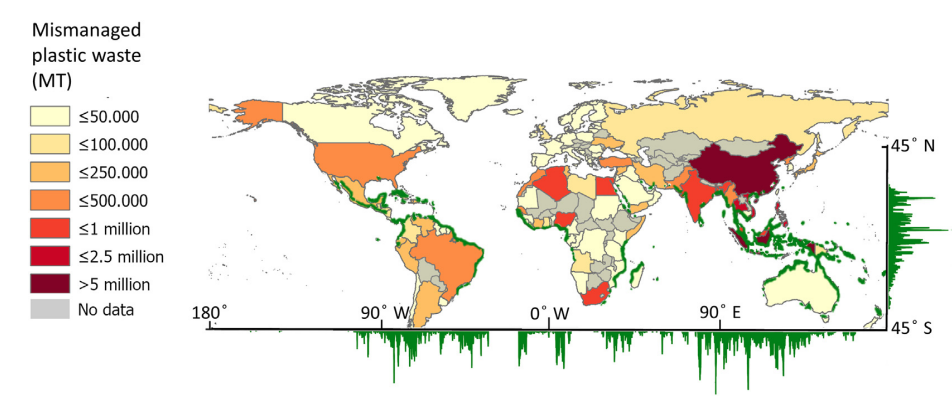
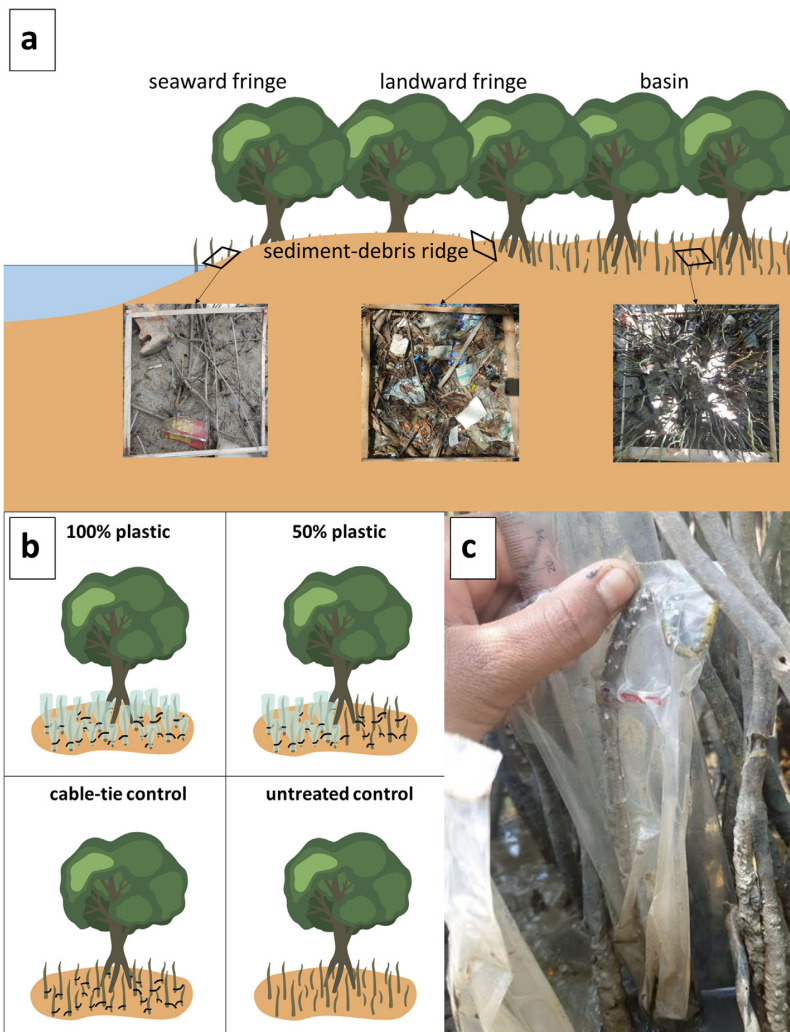

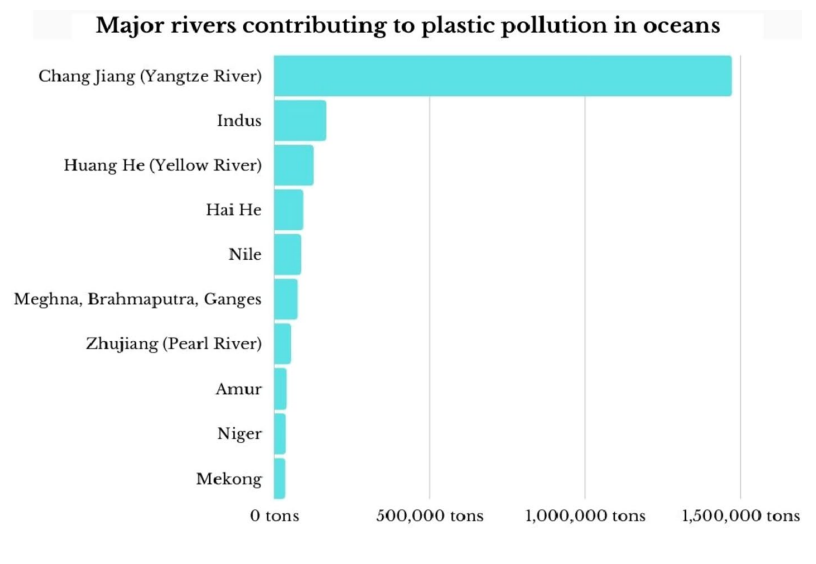


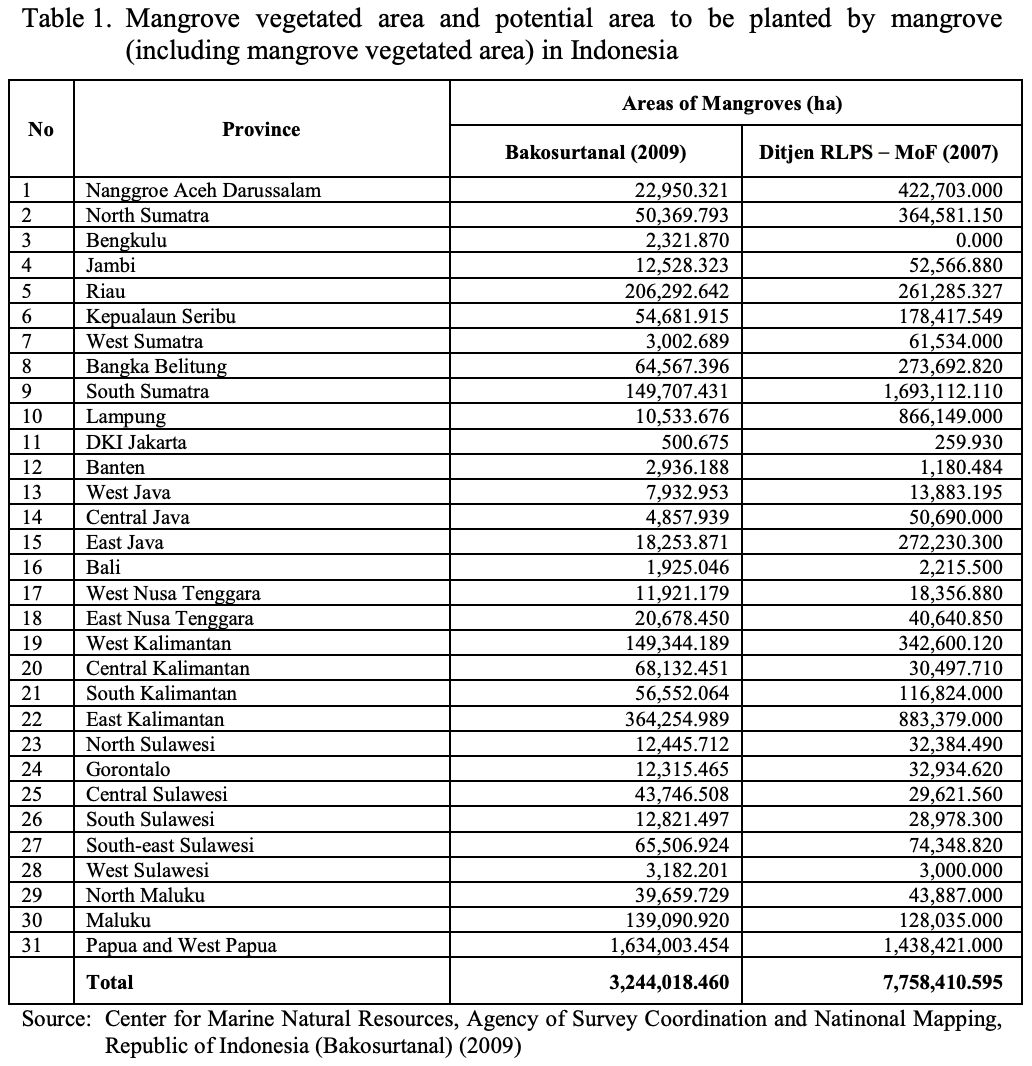


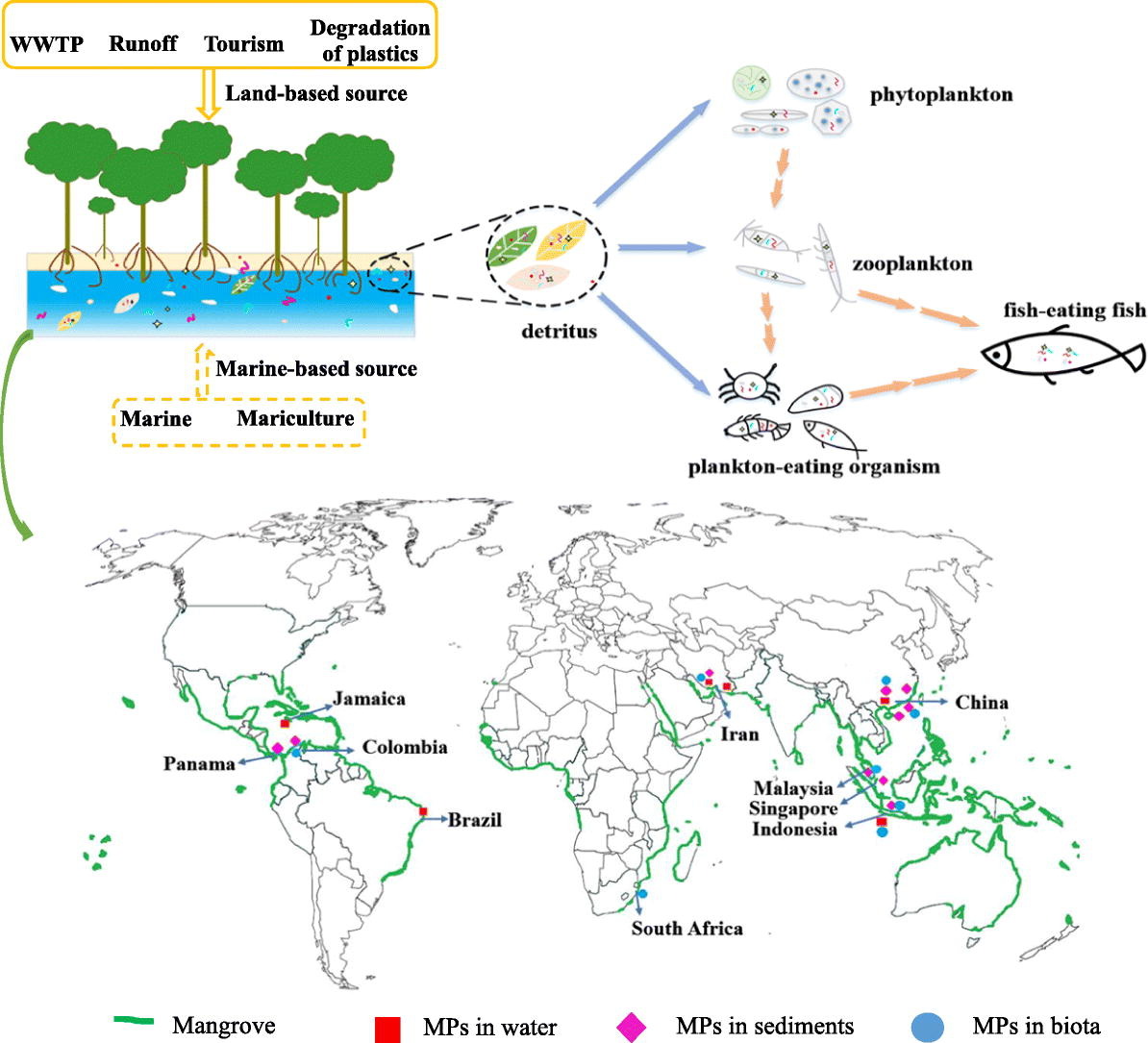
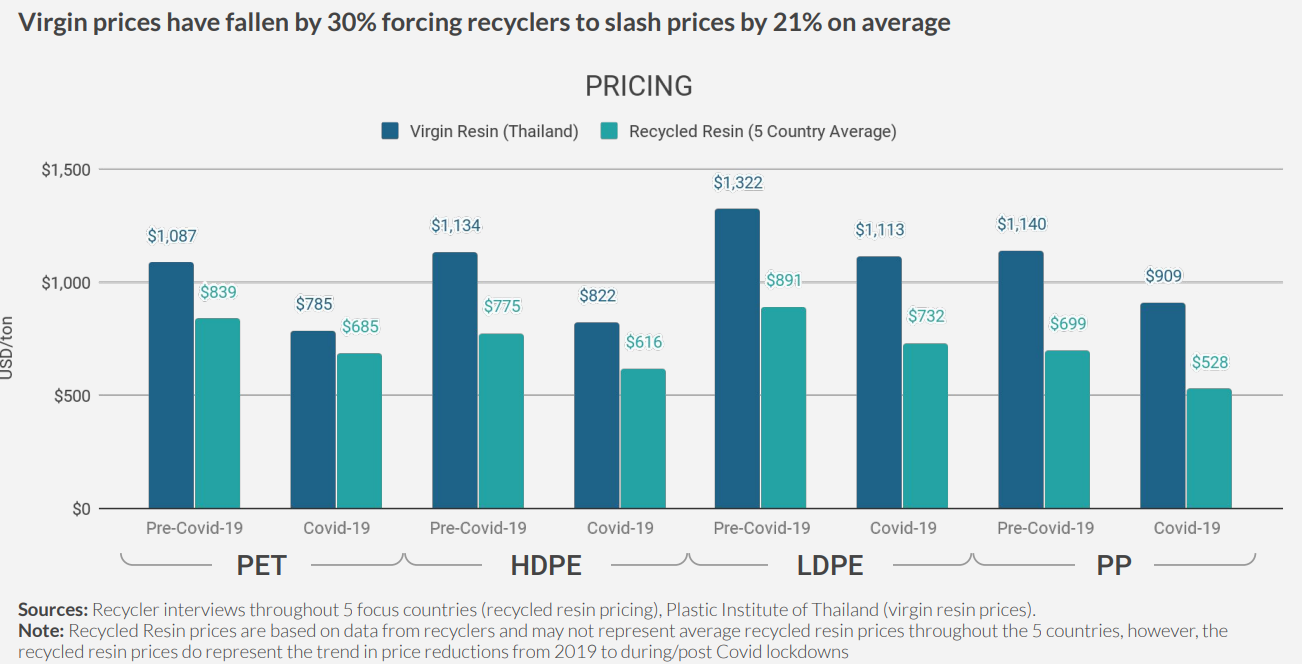
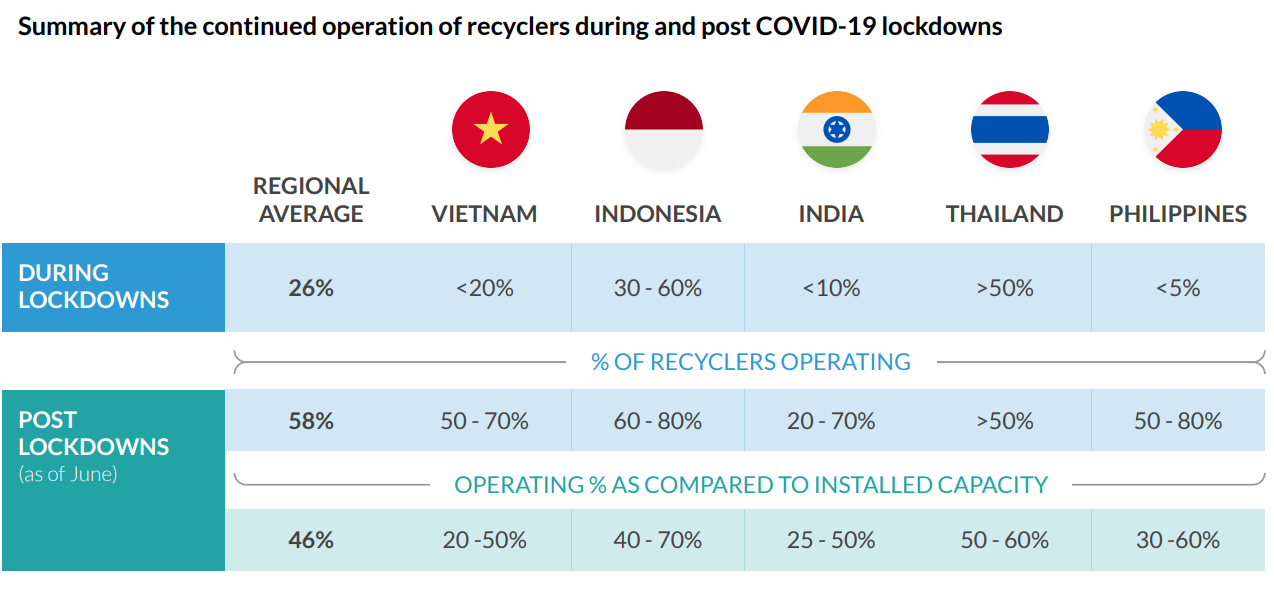
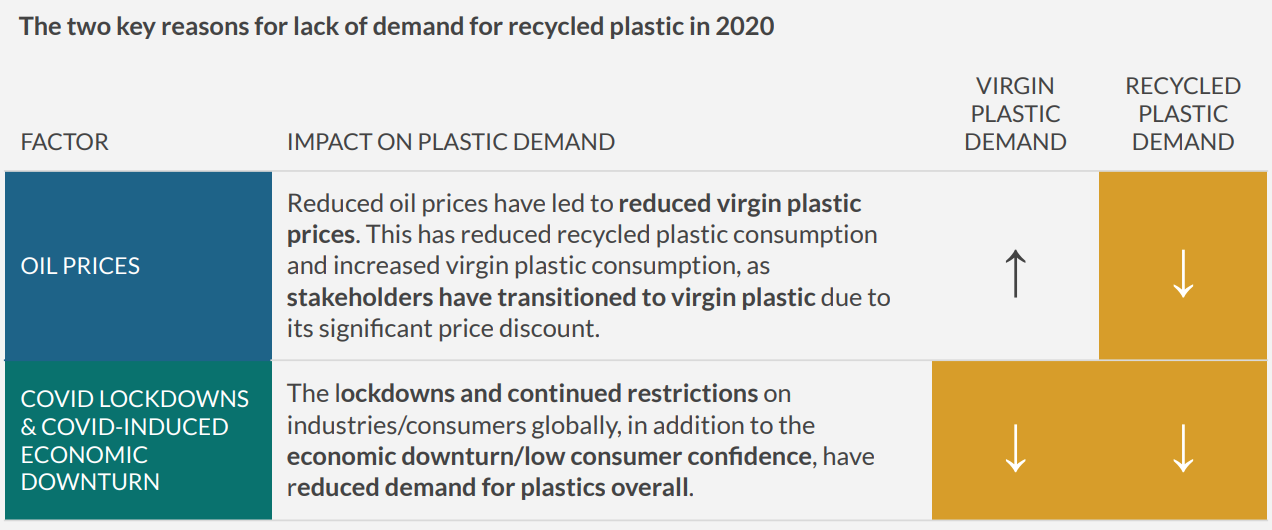
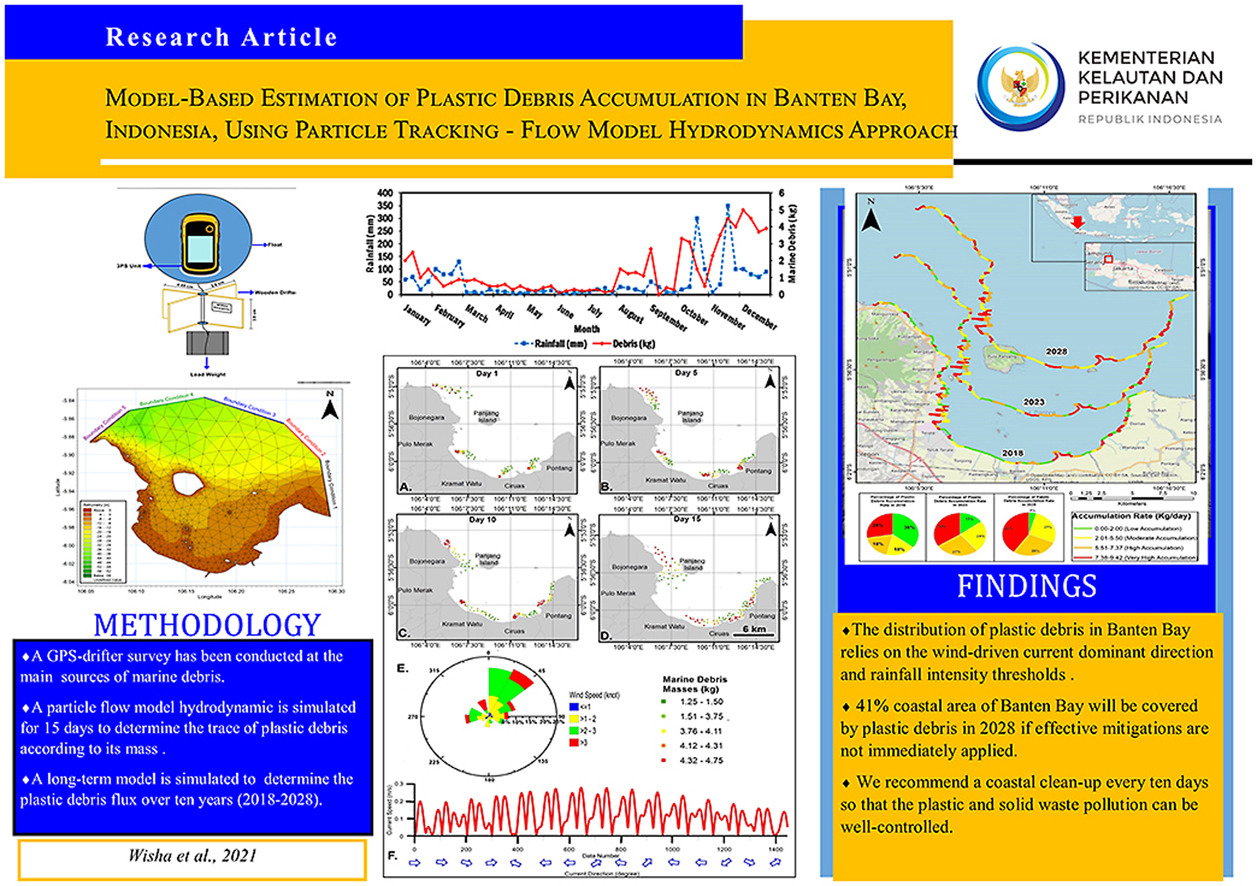





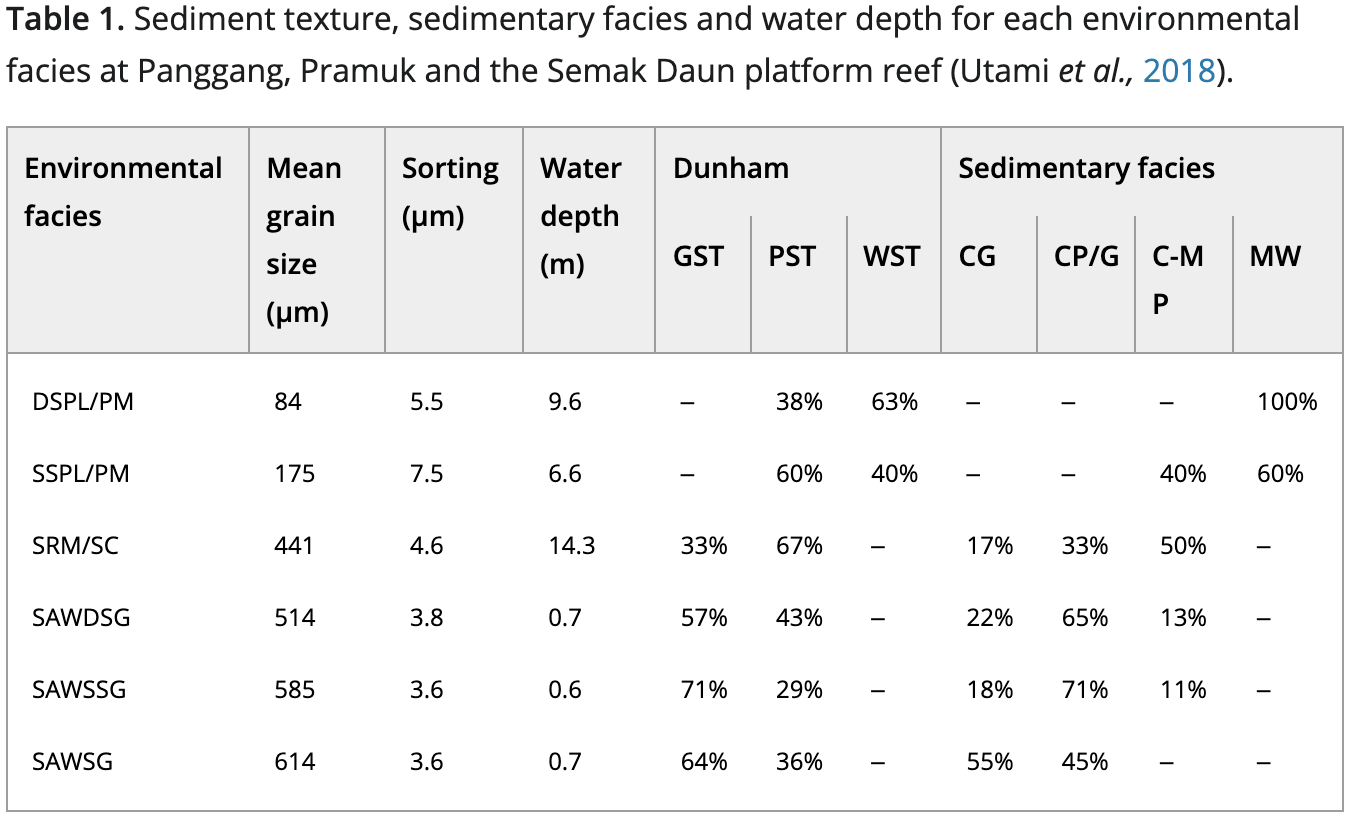


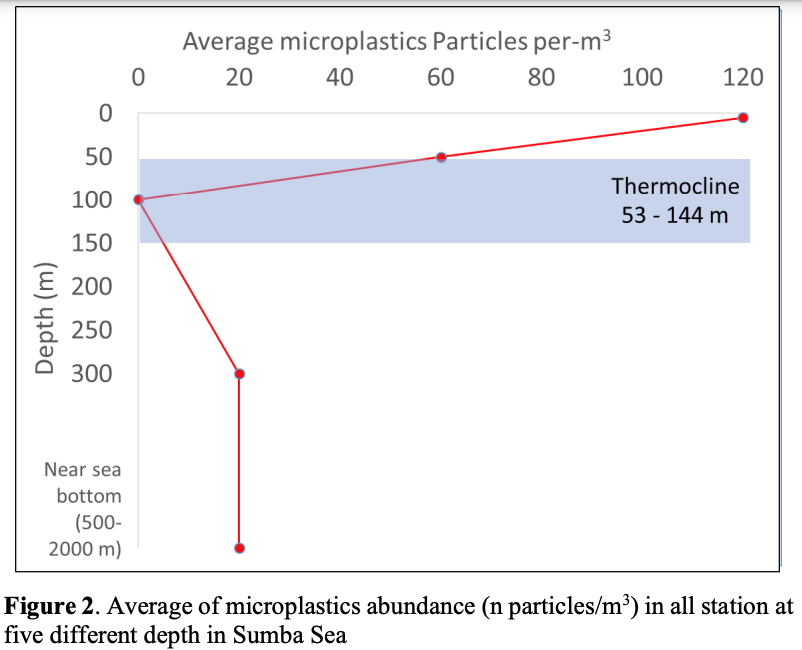






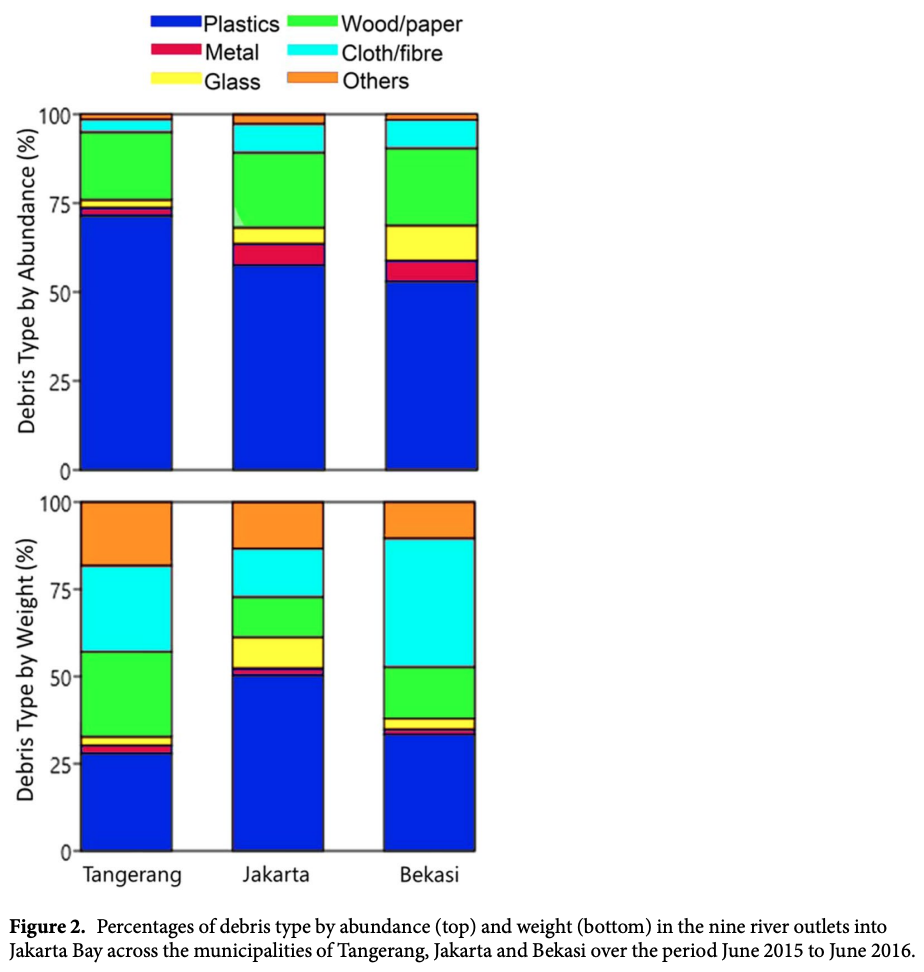

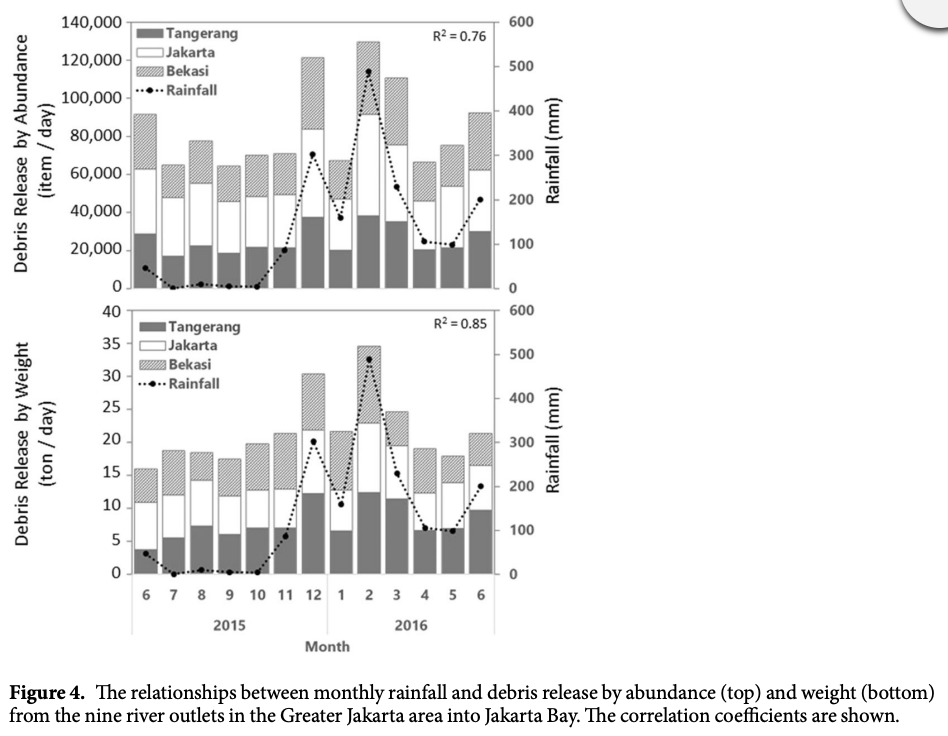
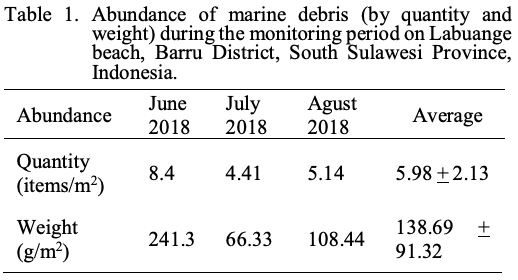


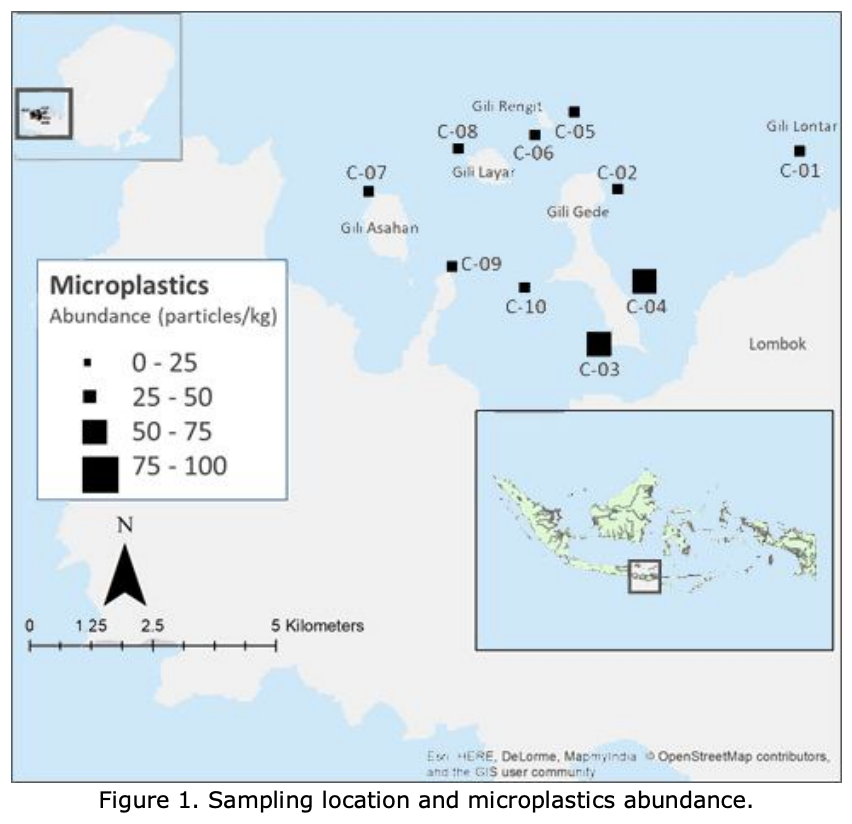
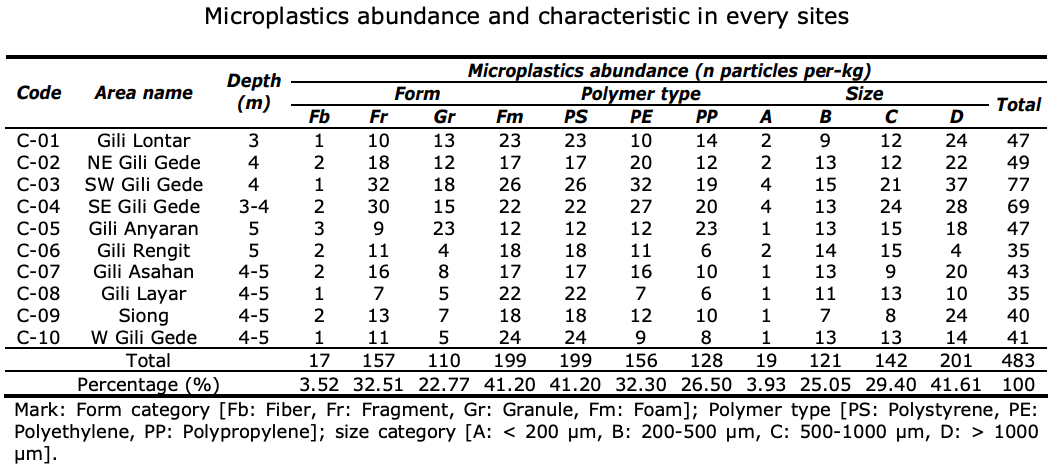
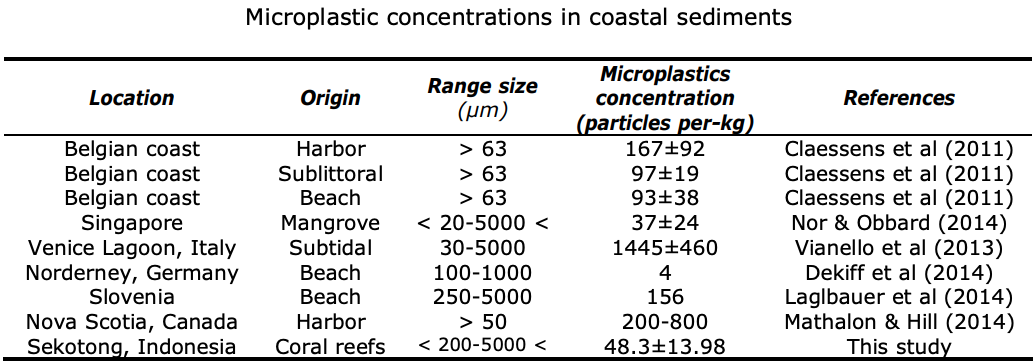
 27-35 - Microplastic in the deep-sea sediment.jpg)
 27-35 - Microplastic in the deep-sea sediment2.jpg)
 27-35 - Microplastic in the deep-sea sediment3.jpg)